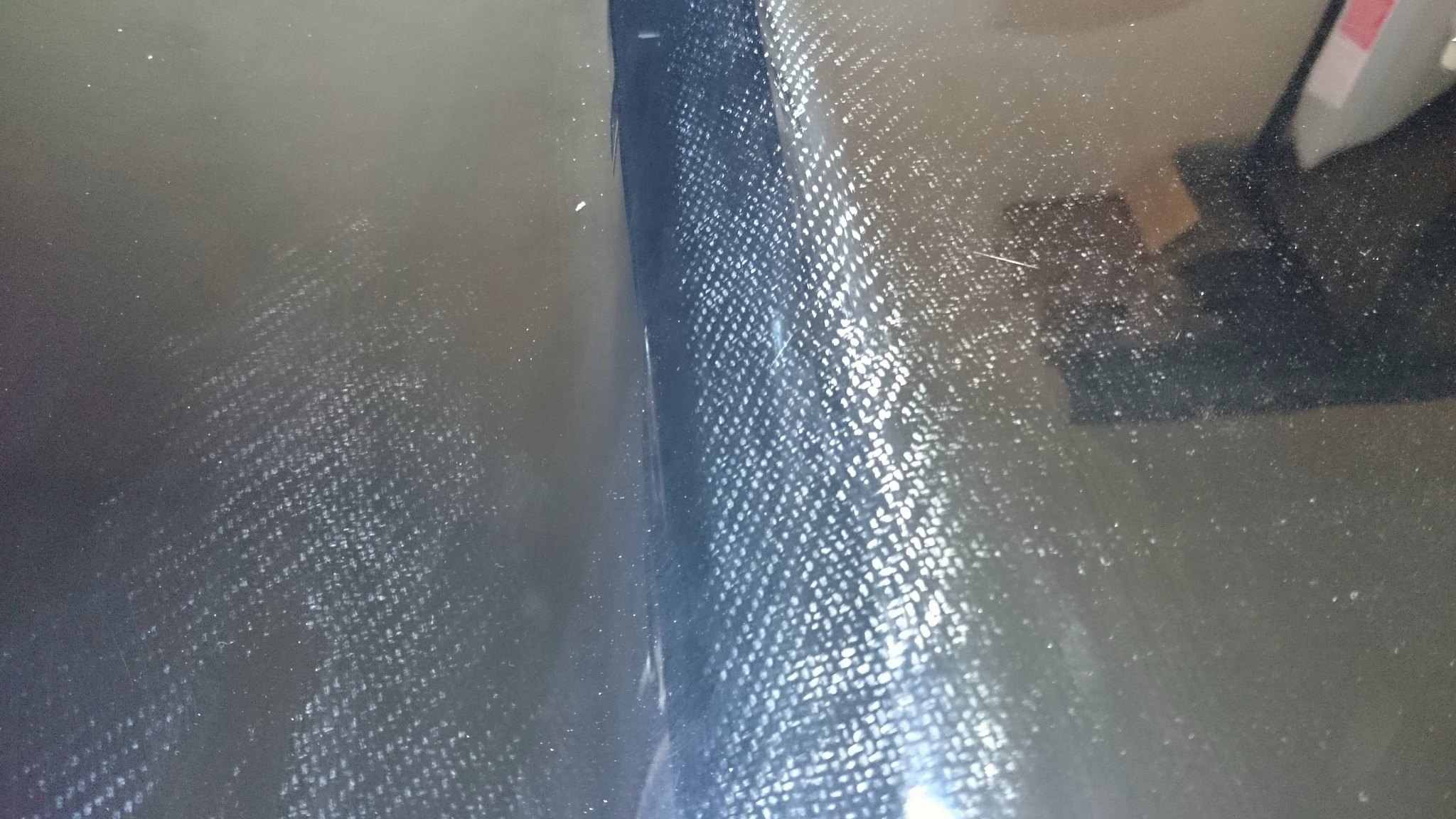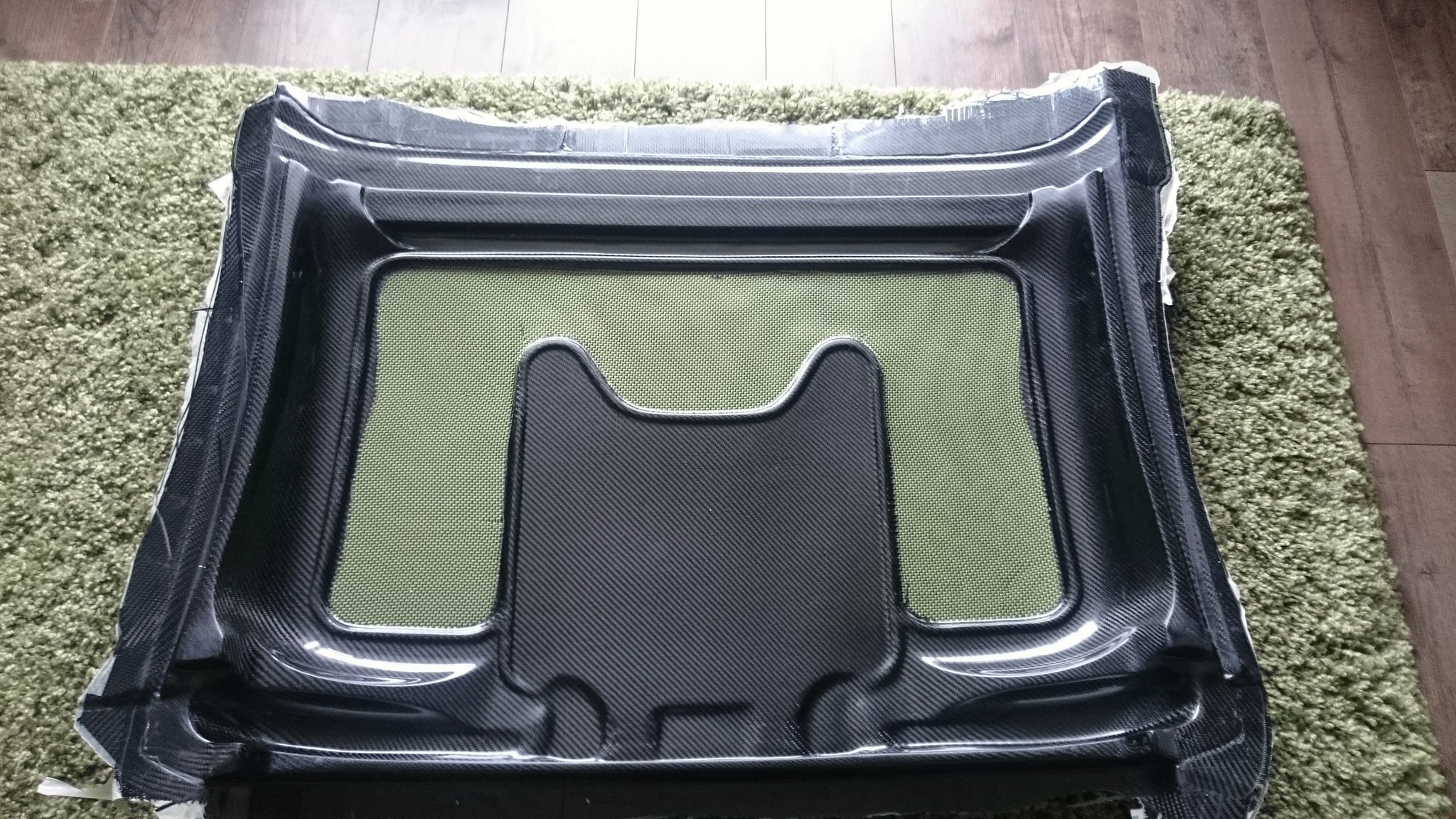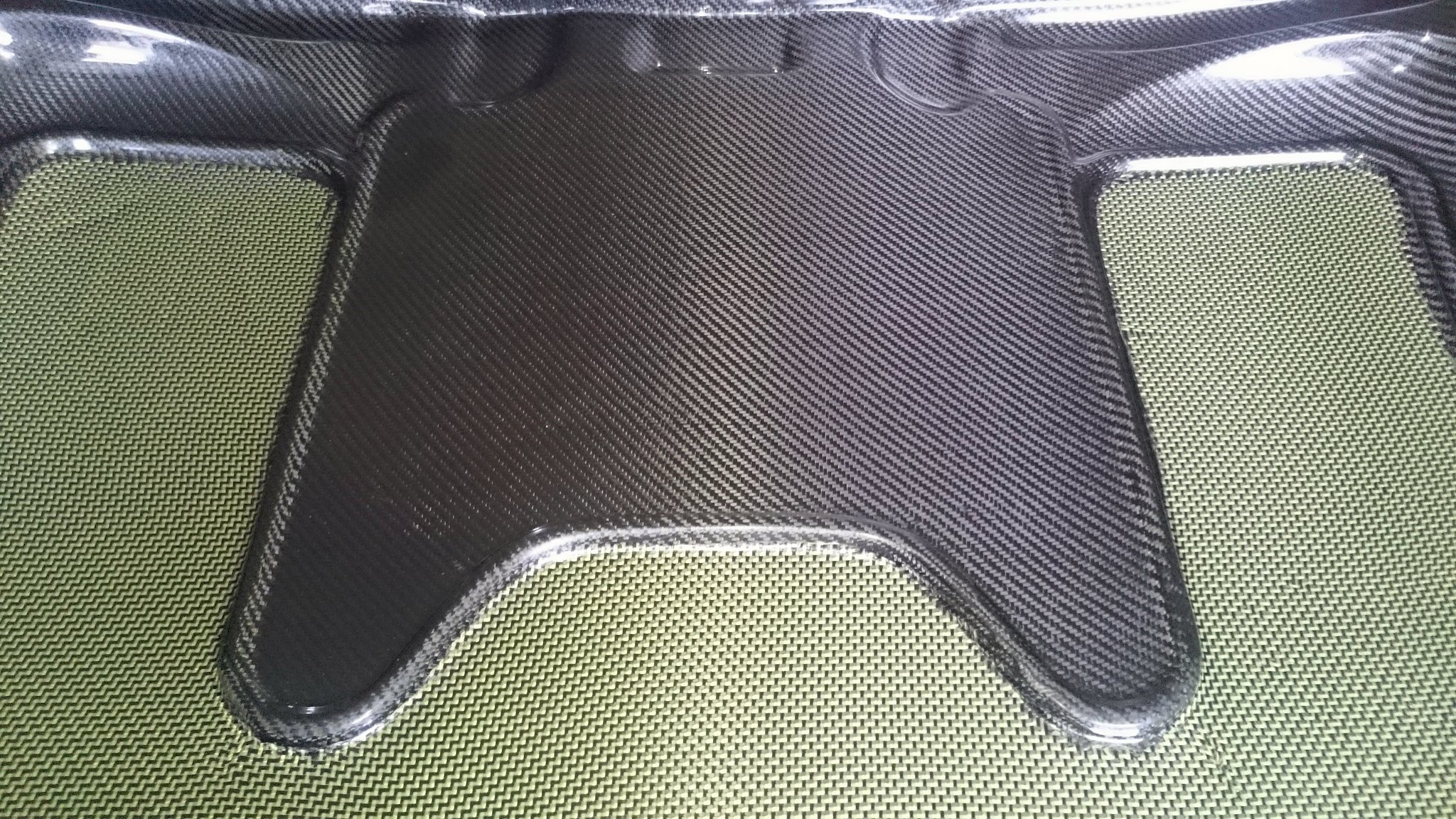|
Matt (Staff)
|
|
|
Group: Forum Members
Posts: 680,
Visits: 1.9K
|
+xJust tried it but failed. I dissolve it in acetone. I tried to spray it but unfortunately it was sprayed like a single beam. I couldnt achieve a mist. More acetone need? My mix viscocity was like syrup. Does it need lower viscocity... like water viscocity? Or my spray bottle wasn't appropriate? Thank you. Definitely sounds like you need to thin the resin more. We've used this technique to good effect but the viscosity would need to be thinner than syrup in order to spray. The solvent will evaporate once the resin is on the mould surface and so you don't need to worry too much about over-thinning it. It's a matter of trial-and-error but I would suggest increasing the solvent ratio until you're able to get it to spray correctly. It should certainly be possible. I know that others have suggested not using the correct ratio of resin to hardener but I would be wary of this. We've successfully used this technique with the resin and hardener at the right ratio.
|
|
|
|
|
Dan22h
|
|
|
Group: Forum Members
Posts: 15,
Visits: 197
|
+xUnfortunately the Zyvax infusion spray tack is no longer manufactured. In order to hold these individual pieces of carbon on the mould’s surface we need to use some sort of spray tack, however, all of the spray tacks (including all of the so called infusion tacks) leave visible marks when used on the surface of the mould. This is because they are all designed for gelcoated or painted parts and not clear finish parts that are generally the norm for carbon fibre work. To overcome this, we do the following: Invisible Epoxy Infusion Spray-Tack 1. Start with a clean, small plastic ‘spritser’ bottle (any openable plastic bottle with a pump-action mister spray, like for hair-care products). 2. Mix up 10g of infusion resin with 3g of infusion hardener and pour into the bottle. 3. Add 10g of metholated spirits to the bottle (it must be purple meths, no white spirit, acetone, alcohol or anything else). 4. Shake the bottle thoroughly. 5. Spray a thin film of the spray tack over the surface of the mould. 6. Allow the meths to evaporate and wait around an hour or two for the epoxy to start reacting when it will become particularly tacky. 7. Stick your reinforcement to the tacky mould surface. When you do the infusion, you will find that the tiny amount of spray-tack on the surface will cross-link with the resin of the infusion epoxy and become completely invisible with not even a trace of anything on the surface of your parts! I tried this method on a car roof panel I made using infusion epoxy and glassfibre mat. once released from the mould i've found some patches of epoxy that appear bonded to the mould surface, there are rough patches on the roof iteslf from where it appears the sprayed epoxy has been pulled from the panel. I've tried chemically cleaning this off with no effect so I'm going to have to polish the surface again. Is it possible the purple methylated spirits has broken down the easylease release agent? If so is there a suitable solvent that won't remove the easylease?  
|
|
|
|
|
Matt (Staff)
|
|
|
Group: Forum Members
Posts: 680,
Visits: 1.9K
|
+x+xUnfortunately the Zyvax infusion spray tack is no longer manufactured. In order to hold these individual pieces of carbon on the mould’s surface we need to use some sort of spray tack, however, all of the spray tacks (including all of the so called infusion tacks) leave visible marks when used on the surface of the mould. This is because they are all designed for gelcoated or painted parts and not clear finish parts that are generally the norm for carbon fibre work. To overcome this, we do the following: Invisible Epoxy Infusion Spray-Tack 1. Start with a clean, small plastic ‘spritser’ bottle (any openable plastic bottle with a pump-action mister spray, like for hair-care products). 2. Mix up 10g of infusion resin with 3g of infusion hardener and pour into the bottle. 3. Add 10g of metholated spirits to the bottle (it must be purple meths, no white spirit, acetone, alcohol or anything else). 4. Shake the bottle thoroughly. 5. Spray a thin film of the spray tack over the surface of the mould. 6. Allow the meths to evaporate and wait around an hour or two for the epoxy to start reacting when it will become particularly tacky. 7. Stick your reinforcement to the tacky mould surface. When you do the infusion, you will find that the tiny amount of spray-tack on the surface will cross-link with the resin of the infusion epoxy and become completely invisible with not even a trace of anything on the surface of your parts! I tried this method on a car roof panel I made using infusion epoxy and glassfibre mat. once released from the mould i've found some patches of epoxy that appear bonded to the mould surface, there are rough patches on the roof iteslf from where it appears the sprayed epoxy has been pulled from the panel. I've tried chemically cleaning this off with no effect so I'm going to have to polish the surface again. Is it possible the purple methylated spirits has broken down the easylease release agent? If so is there a suitable solvent that won't remove the easylease?   Hi Dan, Thanks for the post. That's a really unexpected result that you've got there and not something I've seen before. It does sound and appear that you're correct in thinking that the solvent in the spray tack has somehow prevented the Easy-Lease from doing its job properly however there are numerous examples of similar solvents being used on Easy-Lease (our FusionFix for example contains acetone which is generally more aggressive than alcohol) and we've never seen that disrupt the release agent. Although it seems slightly counter-intuitive, I guess you could try using a small amount of acetone as a thinner instead of the methylated spirit but having said that I really would not have expected a small amount of meths mixed with the resin to have disrupted the Easy-Lease either. What was your application procedure for the Easy-Lease? Did you have multiple layers down and allow it to fully cure (at least an hour) before using the spray tack?
|
|
|
|
|
Dan22h
|
|
|
Group: Forum Members
Posts: 15,
Visits: 197
|
+x+x+xUnfortunately the Zyvax infusion spray tack is no longer manufactured. In order to hold these individual pieces of carbon on the mould’s surface we need to use some sort of spray tack, however, all of the spray tacks (including all of the so called infusion tacks) leave visible marks when used on the surface of the mould. This is because they are all designed for gelcoated or painted parts and not clear finish parts that are generally the norm for carbon fibre work. To overcome this, we do the following: Invisible Epoxy Infusion Spray-Tack 1. Start with a clean, small plastic ‘spritser’ bottle (any openable plastic bottle with a pump-action mister spray, like for hair-care products). 2. Mix up 10g of infusion resin with 3g of infusion hardener and pour into the bottle. 3. Add 10g of metholated spirits to the bottle (it must be purple meths, no white spirit, acetone, alcohol or anything else). 4. Shake the bottle thoroughly. 5. Spray a thin film of the spray tack over the surface of the mould. 6. Allow the meths to evaporate and wait around an hour or two for the epoxy to start reacting when it will become particularly tacky. 7. Stick your reinforcement to the tacky mould surface. When you do the infusion, you will find that the tiny amount of spray-tack on the surface will cross-link with the resin of the infusion epoxy and become completely invisible with not even a trace of anything on the surface of your parts! I tried this method on a car roof panel I made using infusion epoxy and glassfibre mat. once released from the mould i've found some patches of epoxy that appear bonded to the mould surface, there are rough patches on the roof iteslf from where it appears the sprayed epoxy has been pulled from the panel. I've tried chemically cleaning this off with no effect so I'm going to have to polish the surface again. Is it possible the purple methylated spirits has broken down the easylease release agent? If so is there a suitable solvent that won't remove the easylease?   Hi Dan, Thanks for the post. That's a really unexpected result that you've got there and not something I've seen before. It does sound and appear that you're correct in thinking that the solvent in the spray tack has somehow prevented the Easy-Lease from doing its job properly however there are numerous examples of similar solvents being used on Easy-Lease (our FusionFix for example contains acetone which is generally more aggressive than alcohol) and we've never seen that disrupt the release agent. Although it seems slightly counter-intuitive, I guess you could try using a small amount of acetone as a thinner instead of the methylated spirit but having said that I really would not have expected a small amount of meths mixed with the resin to have disrupted the Easy-Lease either. What was your application procedure for the Easy-Lease? Did you have multiple layers down and allow it to fully cure (at least an hour) before using the spray tack? 6 layers of Easylease, 15mins minimum between coats and over night after the final application. It was a very minimal spray of epoxy as well. I've never had anything similar even using the fusionfix. I used 10g epoxy, 3g hardener and 10g methylated spirits.
|
|
|
|
|
Warren (Staff)
|
|
|
Group: Administrators
Posts: 2.5K,
Visits: 8.5K
|
That definitely sounds like way too much meths in the mix. we would normally be using around 10-15% max which should be enough to spray it through most "spritzer" type bottles. Although its not something we have seen before, it does seem that excessive meths has somehow effected the efficiency of EasyLease in this case. In our opinion, the best solution for your problem, especially as you are using glass fibre is to use our FusionFix GP Spray Adhesive. As you are using glassfibre rather than cosmetic carbon, any slight issues on the surface will easily polish off and we also know from experience that Fusion Fix does not impact on release agents.
Warren PenalverEasy Composites / Carbon Mods - Technical Support Assistant
|
|
|
|
|
Dan22h
|
|
|
Group: Forum Members
Posts: 15,
Visits: 197
|
+xThat definitely sounds like way too much meths in the mix. we would normally be using around 10-15% max which should be enough to spray it through most "spritzer" type bottles. Although its not something we have seen before, it does seem that excessive meths has somehow effected the efficiency of EasyLease in this case. In our opinion, the best solution for your problem, especially as you are using glass fibre is to use our FusionFix GP Spray Adhesive. As you are using glassfibre rather than cosmetic carbon, any slight issues on the surface will easily polish off and we also know from experience that Fusion Fix does not impact on release agents. I'm actually making cosmetic carbon, I was using the fibre glass version as a tester to see how it went first before committing to the carbon.The fibreglass version is being used by someone who will be painting it anyway. I'll give it a try with less 10% methylated spirits next time.
|
|
|
|
|
Dan22h
|
|
|
Group: Forum Members
Posts: 15,
Visits: 197
|
Just wanted to add a follow up post for how I got on using 10% methylated spirits. I've come to the conclusion that the epoxy print left on my previous attempt had something to with using fibreglass instead of Carbon. I'm basing this on the next attempt using carbon for the surface layer backed up with the same glassfibre mat used before, this worked perfectly where the carbon was in contact with the mould surface whereas one spot where the fibreglass was in contact with the mould flange left the same print as before. This is the finish I achieved on my latest completely carbon/kevlar version using the spraytack epoxy:  
|
|
|
|
|
Dezer
|
|
|
Group: Forum Members
Posts: 74,
Visits: 1.8K
|
+x[citar]Isso definitivamente parece ser uma forma de metanhas demais na mistura. nós normalmente estaríamos usando cerca de 10-15% no máximo, o que deveria ser suficiente para pulverizá-lo através da maioria dos frascos tipo "spritzer". Embora não seja algo que já vimos antes, parece que as metanfetamensas excessivas têm de alguma forma efetuado a eficiência da EasyLease neste caso. Na nossa opinião, a melhor solução para o seu problema, especialmente porque você está usando fibra de vidro é usar nosso adesivo de pulverização FusionFix GP. Como você está usando fibra de vidro ao invés de carbono cosmético, quaisquer problemas ligeiros na superfície serão facilmente polidos e também sabemos por experiência que a Fusion Fix não afeta os agentes de liberação. Can I replace methylated spirit with pure acetone? In my country I have difficulty buying methylated spirit.
|
|
|
|
|
Warren (Staff)
|
|
|
Group: Administrators
Posts: 2.5K,
Visits: 8.5K
|
we would not recommend pure acetone as it actually breaks down the resin if left long enough. Methylated spirits tends to evaporate off without damaging the base resin.
Warren Penalver
Easy Composites / Carbon Mods - Technical Support Assistant
|
|
|
|
|
fgayford
|
|
|
Group: Forum Members
Posts: 433,
Visits: 1.2K
|
+xJust wanted to add a follow up post for how I got on using 10% methylated spirits. I've come to the conclusion that the epoxy print left on my previous attempt had something to with using fibreglass instead of Carbon. I'm basing this on the next attempt using carbon for the surface layer backed up with the same glassfibre mat used before, this worked perfectly where the carbon was in contact with the mould surface whereas one spot where the fibreglass was in contact with the mould flange left the same print as before. This is the finish I achieved on my latest completely carbon/kevlar version using the spraytack epoxy:   If I remember right there is a coating on fiber glass that aids in he wet out with polyester resin. This could be the contaminant that is giving you the problem. Fred
|
|
|
|